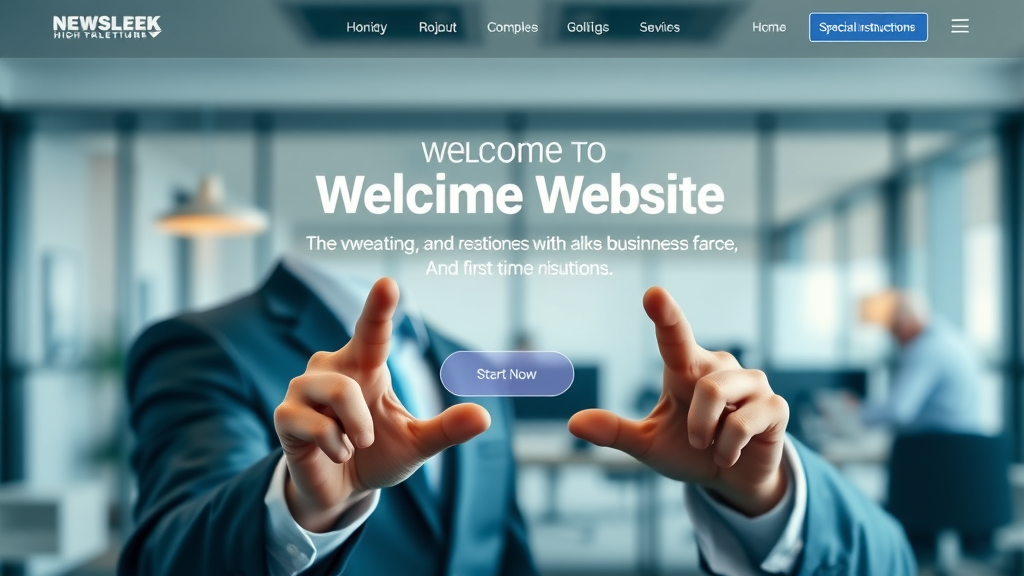Did you know over 60% of businesses that embrace AI automation enjoy significant cost reductions in their first year? It sounds bold, but I was skeptical—until I used generative AI and intelligent automation tools to save $2,000 every month in my business. This isn’t theory—it’s a proven, repeatable workflow that can transform operational costs and free up your team. If you’re ready to see the secrets behind how AI automation revolutionized my operations (and how it can upgrade yours), keep reading for insights, strategies, and real-dollar results.
Unlocking Savings with AI Automation: The Real Impact on Business Operations
Reducing operational costs is essential for small businesses and large enterprises alike. With AI automation , I found a method to slash wasteful expenses by addressing manual, repetitive tasks once and for all. Before automation, we were drowning in hours lost to data entry, endless email sorting, and error-prone customer service workflows. These inefficiencies drained money and stunted our growth.
When AI-powered automation tools entered the picture, the transformation was immediate and quantifiable. Robotic process automation took over repetitive tasks and eliminated human error . Generative AI tools accelerated content production and reporting, while intelligent automation workflows connected applications, removed silos, and accelerated decision-making. The combined effect? Every month, $2K that once disappeared in inefficiencies stayed on our balance sheet, and my team could finally focus on high-value strategy and customer experience—a win for our bottom line and our employees.

“Over 60% of businesses implementing ai automation see substantial cost reductions within the first year. My story is proof that the right automation tools can reshape your entire bottom line.”
What You'll Gain from This Guide on Generative AI and Automation Tools
- How ai automation can directly reduce operational costs
- An insider look at generative ai and its business benefits
- Step-by-step examples of automation tools in action
- Data-driven results: $2K monthly savings broken down
- Practical strategy for integrating intelligent automation

Understanding AI Automation: Definitions, Capabilities, and Market Growth
Defining AI Automation and Intelligent Automation in Modern Business
AI automation refers to the use of artificial intelligence technologies—like machine learning, large language models, and generative ai —integrated into automation tools to streamline business processes effortlessly. This means automating repetitive tasks, enriching data, and making smarter choices faster with minimal human input. In today’s marketplace, intelligent automation goes a step further by combining AI agents and process automation, empowering businesses to scale with innovations that simply weren’t possible before.
Unlike traditional software, intelligent automation adapts to context: it learns from data, predicts outcomes, and handles complex scenarios that used to require skilled (and expensive) human intervention. As businesses aim to reduce costs, AI automation becomes not just a tech buzzword, but a mission-critical asset—one that is evolving rapidly as market growth for AI-driven platforms surges worldwide.
Key Components: Automation Tools, AI Agents, Generative AI, and Process Automation
AI automation ecosystems typically comprise several core elements: automation tools (Zapier, UiPath, Power Automate), ai agents for task-specific actions, and generative ai models (like GPT-4) for creative or cognitive outputs. Pair these components with robust process automation —automating not just isolated tasks but entire workflows—and you unleash the true power of ai in business. AI agents collaborate with your existing stack to execute, analyze, and optimize, making every day more efficient, more reliable, and ultimately, more profitable.
It’s the synergy between these layers—automation platforms, AI models, generative AI, and process automation—that redefines business operations for the digital era. From smarter email filtering to AI-driven customer service and financial reporting, ai and automation break traditional bottlenecks for businesses of every size.
| Tool | Features | Pricing | Use Case | AI/Generative AI Capabilities |
|---|---|---|---|---|
| UiPath | Robotic Process Automation, Task Scheduling | Paid (Enterprise) | Finance, HR, Operations | AI Agents, Machine Learning Integration |
| Zapier | Multi-app Workflow Automation | Free & Paid | Marketing, CRM, Reporting | AI Automations, Generative AI Support |
| Microsoft Power Automate | Drag-and-Drop Flows, Analytics, Custom APIs | Subscription-based | Enterprise Integration, Data Transfer | Large Language Model Support |
| OpenAI GPT (via API) | Text Generation, Data Enrichment | Pay-as-you-go | Content Creation, Chatbots | Generative AI, Natural Language Processing |

The Power of AI: How AI Automation Drives Results and Cost Savings
My Initial Challenge: Rising Operational Costs and Manual Workload
As my business expanded, operational costs crept up—and so did my team’s workload. We faced endless manual data entry, duplicate record checks, and recurring errors that slowed operations and eroded profits. Even routine business processes —from responding to customer service inquiries to tracking inventory—ate up hours each week, and despite best efforts, human error persisted.
It was clear that traditional software alone couldn’t keep pace with our needs or safeguard margins. Each employee was a bottleneck, and scaling profitably felt out of reach. I needed a smarter, sustainable solution—one that could scale with us and eliminate inefficiencies at their root.
Why I Chose Intelligent Automation Over Traditional Solutions
Instead of patching problems with more staff or one-off scripts, I researched intelligent automation and discovered its immense value over dated alternatives. Intelligent automation leverages AI agents and process automation to execute, monitor, and optimize end-to-end workflows—not just speed up one task, but unlock exponential efficiency gains across operations.
By integrating automation tools imbued with AI-driven decision-making, I empowered my business with real-time insights and proactive automation . No more firefighting or constant supervision. Intelligent automation was the scalable solution we needed to finally reduce costs and maximize our team’s creative potential.
“Intelligent automation enabled my team to focus on strategic work, not repetitive tasks.”

Step-by-Step: How I Identified and Implemented the Right Automation Tools
Audit: Mapping Out Manual Processes for AI and Automation Improvement
The first step in my AI automation journey was a thorough audit of our daily workflows. I worked with my team to document every task, noting manual bottlenecks, recurring repetitive tasks , and error-prone steps. Mapping these processes onto a visual workflow made it easy to spot opportunities where process automation and ai agents could deliver outsized value.
What became clear was how much valuable time was lost to activities that could be easily handled by AI-powered automation tools: customer email sorting, invoice processing, data validation, and social media posting. The audit not only provided a blueprint for change but also helped get team buy-in for automation projects—everyone could see the benefits on the horizon.

Selecting Effective AI Automation Tools and Generative AI Solutions
With our workflow map in hand, I evaluated leading automation tools and generative ai solutions based on our needs: integration capabilities, ease of use, and ROI. UiPath let us automate structured office tasks like invoice processing; Zapier handled multi-app marketing automations; and OpenAI’s GPT models powered content generation and customer service chatbots. Each ai solution was chosen for its specific strength, cost-effectiveness, and ability to work in tandem with existing systems.
The result was an optimized tech stack combining multiple automation platforms , ai agents , and process automation to cover every stage of our business process—from new lead capture to financial reporting.
Integrating AI Agents to Transform Daily Operations
AI agents became the backbone of our transformation. These “digital coworkers” managed repetitive tasks, escalated issues only when necessary, and offered real-time insights via dashboards. By pairing ai agents with large language models and robust process automation, we eliminated errors and accelerated everything from marketing to customer service.
Onboarding the team was straightforward: most platforms featured visual workflows and intuitive dashboards. Once ai agents were integrated, we saw instant gains in productivity, fewer mistakes, and newfound capacity for strategic projects.
Transformational Results: Measurable Savings and Business Impact from AI Automation
Monthly Cost Savings Breakdown: Where $2K Was Cut Using AI and Automation Tools
Here’s what our savings looked like. By automating tedious, error-prone, and time-consuming business processes with the right combination of automation tools and ai automation workflows, we unlocked substantial reductions in overhead costs.
| Task | Pre-Automation Cost | Post-Automation Cost | AI Tool Used |
|---|---|---|---|
| Invoice Processing | $650/month (manual labor) | $100/month (automated) | UiPath, AI Agent |
| Customer Email Sorting | $400/month | $80/month | Generative AI, Zapier |
| Content Generation | $600/month | $150/month | OpenAI GPT |
| Social Media Scheduling | $350/month | $70/month | AI Automation Tool |
| Total Savings | $2,000 | $400 |

Improvements in Customer Experience with AI Agents and Automation
Customer experience saw a massive upgrade too. AI-powered chatbots, fueled by large language models and generative ai , ensured fast, consistent answers to customer queries, no matter the time of day. Automated workflows tracked, triaged, and resolved support tickets faster, reducing average response times and boosting customer satisfaction. With ai agents supporting the help desk, live staff were empowered to handle complex cases—further elevating the customer experience.
By integrating AI automation, our business not only cut costs but delivered a level of responsive, personalized service that grew our reputation and customer loyalty.

Boosting Efficiency: The Power of Large Language Models in Automation
The new wave of AI-driven automation tools leverage large language models for everything from natural language processing to scalable email marketing. With these powerful models, we dramatically reduced manual data entry errors, efficiently automated communication templates, and generated custom analytics and reports—all at a scale and quality unachievable just a few years ago.
This means fewer repetitive tasks, more time for creative work, and measurable increases in operational efficiency. The power of ai is here, and when integrated thoughtfully, it exponentially boosts what every business can deliver.
- Reduced manual data entry errors
- Shorter response times in customer service
- Scalable marketing automation campaigns
AI Agents and Agentic AI: Redefining Intelligent Automation in Business
What Makes AI Agents So Vital for Process Automation?
AI agents play a pivotal role in intelligent automation, acting as autonomous digital assistants that handle process automation, monitor workflow health, and adapt seamlessly to new data or business requirements. Unlike static scripting or traditional robotic process automation, AI agents leverage advanced ai models and machine learning, allowing them to learn on the job, expand their capabilities, and even predict potential bottlenecks before they happen.
Deploying ai agents in your stack means more responsive, agile operations. Whether managing supply chains or guiding customers through support flows, these agents eliminate time lags, minimize human error , and keep everything running smooth, 24/7.

Agentic AI vs. Traditional Automation Tools: Key Differences
Traditional automation tools rely on fixed, rules-based scripts to automate tasks, but they can’t flexibly respond to exceptions, learn from new data, or adapt processes in real time. By contrast, agentic AI solutions use AI agents equipped with machine learning and natural language processing to understand intent, anticipate needs, and optimize decisions dynamically across workflows.
This makes agentic ai solutions highly scalable and resilient in the face of changing business requirements. They’re the reason modern intelligent automation can confidently tackle complex, previously un-automatable processes—and deliver enormous value through cost savings and efficiency gains.
“Agentic AI can learn and adapt, performing tasks that were impossible to automate before.”
Expanding ROI: Using AI Automation for Marketing, Finance, and Operations
Automation Tools in Digital Marketing: Generative AI Campaigns
AI automation has revolutionized digital marketing with generative ai tools that personalize content, optimize campaigns, and analyze metrics in real time. Automated split testing, audience segmentation, and message customization—once reserved for large teams—became achievable for businesses of any size thanks to automation tools and AI agents. Campaign performance is now driven by data, and marketers have more time for strategic planning.

Finance Process Automation: Intelligent Automation and Cost Management
In finance, intelligent automation has automated accounts payable, invoice processing, and expense analysis. By removing manual data transfer and reducing human error with AI-driven reconciliation, we stayed audit-ready and cut accounting costs. AI agents now flag anomalies, generate financial reports, and streamline payroll—all of which slashed our monthly spend and kept us focused on growth.
Automating financial operations also allowed predictive analytics and dynamic cash flow forecasting, arming leadership with actionable insights that were previously unavailable.
Streamlining Operations with AI and Automation Integration
Beyond marketing and finance, AI and automation integration redefined our business operations. Repetitive tasks that once required constant manual oversight—inventory tracking, supplier management, and standard reporting—now run on autopilot. This frees up your team to focus on innovation, client service, and scaling the business.
Integrating AI-enabled automation platforms is key for businesses seeking uninterrupted growth, reduced costs, and improved customer experience .
- Email marketing automation (example: campaign split test using ai automation)
- Invoice processing and bookkeeping with ai agents
- Inventory management powered by intelligent automation
Selecting the Right AI Automation Solution for Your Business
Essential Features to Look For in Automation Tools & Intelligent Automation Platforms
When selecting an automation tool or intelligent automation platform , focus on capabilities that will future-proof your investment. Look for robust AI agent and generative ai integrations, easy-to-use flowcharts, flexible API connections, and customizable reporting. Security, scalability, and transparent pricing models are also non-negotiable for long-term ROI. Platforms like UiPath, Zapier, and Microsoft Power Automate offer wide support for AI and integrations that fit nearly any business stack and process automation need.

Questions to Assess AI and Automation Suitability in Your Business
- Does the automation tool offer generative ai capabilities?
- Can the ai agent integrate with your existing software stack?
- What immediate and long-term ROI can you expect?
Overcoming Challenges: Common AI Automation Pitfalls and How to Avoid Them
Typical Implementation Mistakes with Automation Tools and AI Agents
Adopting AI automation can be transformative, but missteps often derail expected gains. Common mistakes include choosing tools with insufficient integration capabilities, underestimating required training, or automating the wrong processes. Businesses sometimes fail to map out their business process thoroughly, overlooking human oversight or compliance obligations. The most successful AI initiatives start with a meticulous audit and a clear roadmap for AI and automation rollout to ensure end-to-end value.
Stay focused on outcomes, not just technology features, and ensure you measure progress at each step. Proactive troubleshooting and stakeholder engagement are critical to keeping your automation journey on target.
Ensuring Security and Compliance in AI and Automation Deployments
Security and compliance can’t be afterthoughts in AI automation projects. Deploying AI agents and automation tools means handling sensitive business data, so select platforms with robust encryption, audit trails, and compliance certifications (like GDPR and SOC2). Always involve IT and compliance teams in deployment—especially when integrating AI models into customer-facing applications or handling PII.
Enforce strong access controls, monitor automation logs for anomalies, and periodically review workflows for regulatory alignment. A secure, compliant approach will keep your business—and your customers—safe from both data breaches and reputational risks.
People Also Ask: What is the AI automation?
AI automation refers to the application of artificial intelligence technologies—including machine learning, generative ai, and intelligent automation—to streamline, automate, and optimize business processes. It enables organizations to reduce human intervention in repetitive tasks, boost efficiency, and cut costs by deploying smart algorithms and automation tools.
People Also Ask: Which AI is best for automation?
The best AI for automation depends on specific business needs. Leading platforms like UiPath, Zapier, OpenAI’s GPT, and Microsoft Power Automate offer robust ai automation capabilities, intelligent automation features, and support for generative ai agents. Organizations should evaluate which solution best fits their workflow and integration requirements.
People Also Ask: Is AI automation worth it?
Yes, ai automation is worth it for the majority of businesses, as it reliably delivers cost reductions, greater efficiency, and improved accuracy. The best results come from integrating intelligent automation thoughtfully and aligning automation solutions with pressing business challenges.
People Also Ask: What are the 4 types of automation?
The four main types of automation are: Fixed/Hard Automation, Programmable Automation, Flexible/Soft Automation, and Intelligent Automation. Intelligent automation leverages ai agents and process automation to offer the greatest flexibility and adaptability for modern enterprises.
FAQs: Top AI Automation Questions Business Owners Ask
- How quickly can I implement ai automation?
- What training is needed for my team?
- Can automation tools scale with business growth?
- What are the most common intelligent automation workflows?
- Is human oversight required for ai automation?
Lessons Learned: Key Takeaways on AI Automation and Intelligent Automation
- Identify processes suitable for automation tools early
- Combine generative ai and agentic ai for complex workflows
- Continually monitor and optimize your ai automation efforts
- Leverage intelligent automation for sustainable cost savings
Exploring the Future: The Evolving Power of AI Automation in Business

“AI automation is not just a trend; it’s the backbone of tomorrow’s agile enterprise.”
Ready to Transform Your Operations with AI Automation? Book Your Free Strategy Session
Ready to grow your business? Book your free marketing strategy session with our team today.
To further enhance your understanding of AI automation and its impact on business operations, consider exploring the following resources:
-
“What Is AI Automation? A Complete Guide to How It Works” : This comprehensive guide delves into the fundamentals of AI automation, detailing its benefits such as increased efficiency, improved decision-making, and cost savings. It also discusses key technologies like machine learning and natural language processing that drive AI automation. ( smartconvo.io )
-
“What is Artificial Intelligence (AI) Automation? Benefits, Examples, and Uses” : This article provides an in-depth look at AI automation, highlighting its advantages, including enhanced decision-making and increased efficiency. It also explores various applications across sectors like healthcare, finance, retail, and manufacturing, illustrating how AI automation is transforming industries. ( geeksforgeeks.org )
If you’re serious about leveraging AI automation to optimize your business processes and achieve significant cost savings, these resources will provide you with valuable insights and practical examples to guide your implementation strategy.
 Add Row
Add Row  Add
Add 



Write A Comment